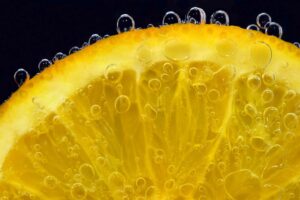Exploring Nature’s Aromatic Alchemy
Welcome to the captivating world of essential oils! Have you ever wondered why plants emit those enchanting fragrances we love? Let’s explore the secrets behind why do plants produce essential oils and their incredible significance.
The Nature and Origins of Essential Oils
Essential oils are natural aromatic compounds found in various parts of plants—flowers, leaves, stems, bark, roots, and seeds. Each oil possesses a unique chemical composition that gives it distinct characteristics. Throughout history, essential oils have been cherished in ancient cultures for their medicinal, spiritual, and cosmetic applications.
The Purpose and Functions of Essential Oils in Plants
Essential oils play crucial roles in the survival and prosperity of plants:
Defense Mechanisms
- Natural insect repellents and deterrents help plants fend off pests.
- Antimicrobial properties protect plants from harmful pathogens and microorganisms.
Reproduction and Pollination
- Essential oils entice pollinators like bees and butterflies, aiding in successful pollination and seed production.
Environmental Adaptation
- Essential oils assist in temperature regulation, enabling plants to withstand harsh conditions.
- Chemical signaling between plants influences their growth, giving them a competitive edge.
Where Do Essential Oils Come From?
Essential oils originate from various plant parts:
Flowers and floral essential oils: Known for their delightful scents, flowers produce essential oils that attract pollinators.
Leaves and leaf-derived essential oils: Leaves contain essential oils with various therapeutic and aromatic properties.
Stems and bark essential oils: Bark and stems contribute to the overall health of the plant with essential oils.
Roots and root-derived essential oils: Roots may hold essential oils, contributing to the plant’s resilience and protection.
Seeds and seed-derived essential oils: Even seeds yield essential oils with unique qualities.
Can All Plants Produce Essential Oils?
Aromatic Plants and Essential Oil Production Many aromatic plants produce essential oils, contributing to their alluring scents and unique characteristics. However not all plants have this capability; essential oil production is specific to aromatic species.
Genetic and Environmental Factors Affecting Essential Oil Production Genetic factors and environmental conditions influence the production and composition of essential oils, resulting in diverse aromas and properties.
Human Use and Benefits of Essential Oils
Aromatherapy and Therapeutic Applications Aromatherapy enhances mental, emotional, and physical well-being with essential oils.
Use of Essential Oils in Perfumery and Cosmetics Essential oils create captivating scents in perfumes and enrich skincare and beauty products.
Natural Medicine and Potential Health Benefits Essential oils are used in alternative medicine to support various health concerns, thanks to their potential anti-inflammatory, antimicrobial, and analgesic properties.
Extracting Essential Oils
Modern extraction methods, such as steam distillation and cold pressing, preserve the potency of these precious oils. In the rare event that a plant is too delicate to be steam distilled or cold pressed the essential oil must be extracted with the use of a solvent. Let’s take a closer look at these essential oil extraction methods.
Steam Distillation
Steam distillation is a widely used method for extracting essential oils and other volatile compounds from plants. It’s a gentle and efficient process that preserves the delicate aromas and therapeutic properties of the oils. A few examples of plants that are are steam distilled are lavender, peppermint, rose, frankincense, tea tree, chamomile, and eucalyptus. Here’s a detailed explanation of how steam distillation works:
-
Setup and Apparatus:
- A still: The still is a specialized container or apparatus used for the distillation process. It typically consists of a boiler (or distillation flask), a distillation column (also known as a condenser), and a collection vessel (receiver).
- Plant material: The plant parts containing essential oils (e.g., flowers, leaves, or stems) are loaded into the still.
- Water: The still requires water to produce steam for the distillation process.
-
Heating the Still:
- Water is heated in the boiler, which generates steam.
- The steam rises and passes through the plant material in the still.
-
Steam Entrainment:
- As the steam moves through the plant material, it gently breaks open the oil glands or oil cells, releasing the essential oil.
- The steam and essential oil vapor rise together, carrying the volatile compounds of the plant.
-
Condensation:
- The steam and essential oil vapor mixture enters the distillation column, which is usually a coiled tube or a series of interconnected pipes.
- Cold water is continuously circulated around the outside of the column, causing the steam and vapor to condense back into liquid form.
-
Separation:
- The condensed mixture of water and essential oil flows into the collection vessel.
- Since essential oils do not mix with water, they float on the surface of the collected liquid.
-
Extraction:
- The essential oil layer is skimmed off the top of the collected liquid.
- The remaining water is known as the hydrosol or floral water, which also contains some water-soluble aromatic compounds and other constituents from the plant.
-
Final Product:
- The collected essential oil undergoes further filtering or purification to remove any impurities.
- The result is a highly concentrated and pure essential oil, ready to be used in various applications.
Steam distillation is favored for many essential oils because it’s a gentle process that doesn’t involve high temperatures that might damage the delicate aromatic compounds. However, the efficiency of steam distillation can vary depending on the plant material and the desired essential oil yield. Some plants require longer distillation times to release their essential oils fully. Overall, steam distillation remains one of the most traditional and reliable methods for obtaining high-quality essential oils from various aromatic plants.
Cold Pressing
Cold pressing, also known as expression or mechanical extraction, is a method used to extract essential oils from the rind or peel of certain fruits, primarily citrus fruits. Unlike steam distillation, which is suitable for extracting essential oils from various plant parts, cold pressing is specific to the oils found in the outer layer of citrus fruits. Here’s a more detailed explanation of how cold pressing works:

Cold Pressing is generally used for extracting citrus essential oils.
-
Fruit Selection:
- Cold pressing is commonly used for extracting essential oils from citrus fruits such as oranges, lemons, limes, and grapefruits.
- Ripe and fresh fruits are selected for the process to ensure the highest oil content and quality.
-
Preparation:
- The fruits are thoroughly washed and cleaned to remove any dirt, debris, or pesticides from the surface.
- The rind or peel, which contains the essential oil, is carefully separated from the fruit’s flesh.
-
Extraction:
- The peel is then pressed or punctured to release the essential oil.
- Pressure is applied to the peel to rupture the oil-containing glands or sacs, allowing the essential oil to flow out.
-
Oil Separation:
- The released essential oil is collected and separated from the juice and other components of the fruit.
- Since essential oils are lighter than water and juice, they naturally rise to the surface and can be easily separated.
-
Final Product:
- The collected essential oil may undergo minimal filtration to remove any remaining fruit particles or impurities.
- The result is a pure and unadulterated essential oil with the characteristic aroma of the specific citrus fruit.
It’s important to note that cold pressing is called so because the process does not involve any additional heat or steam. The extraction is carried out at ambient or room temperature, hence the name “cold pressing.” This gentle method helps preserve the natural fragrance and chemical composition of the essential oil, which can be easily affected by high temperatures.
Cold-pressed citrus essential oils are highly valued for their vibrant and fresh aromas. They are widely used in perfumery, aromatherapy, cosmetics, and flavoring applications. Additionally, the remaining citrus fruit juice, which is separated during the cold pressing process, can be utilized for other purposes, reducing waste and maximizing the benefits of the citrus fruit extraction.
Extracting With Solvents
Some essential oils are extracted using solvents in a process known as solvent extraction or enfleurage. This method is particularly used for obtaining essential oils from delicate flowers that do not yield sufficient oil through steam distillation or for flowers that cannot withstand high temperatures. Here’s an explanation of solvent extraction:
-
Plant Material Selection:
- Solvent extraction is primarily employed for extracting essential oils from delicate and highly aromatic flowers, such as jasmine, tuberose, and rose.
-
Enfleurage (Cold Fat Extraction):
- Enfleurage is a traditional method of solvent extraction that involves placing the flower petals on glass plates coated with a layer of odorless vegetable fat or oil (called “chassis”).
- The aromatic compounds in the flowers infuse into the fat or oil over several days, enriching it with the flower’s fragrance.
-
Solvent Extraction:
- After the fat or oil is saturated with the flower’s aroma, a solvent, typically a food-grade alcohol, is used to extract the essential oil from the fat.
- The solvent dissolves the essential oil and other aromatic compounds, creating a solution called a “concrete.”
-
Concrete Separation:
- The concrete is then filtered to separate the essential oil from the solvent and other non-aromatic components.
- The resulting mixture contains both the essential oil and waxes or other plant materials.
-
Further Processing:
- To obtain the pure essential oil, the concrete undergoes a process called “vacuum distillation” or “steam distillation.”
- The solvent is removed from the mixture under low pressure and low temperature, leaving behind the essential oil in its pure form.
Solvent extraction is a labor-intensive and costly method, making it less common than steam distillation for most essential oils. However, for flowers like jasmine and tuberose, which are very delicate and cannot withstand the heat of steam distillation, solvent extraction is the preferred method to capture their exquisite fragrances.
It’s worth noting that the solvent extraction process is well-controlled, and the solvents used are typically safe and food-grade. Additionally, extensive testing and refining are performed to ensure that the final essential oil is free from any traces of solvents and is safe for use in various applications.
Conclusion: Why Do Plants Produce Essential Oils?
Essential oils are more than just pleasant aromas; they are essential components of a plant’s biology. From protecting against threats to aiding in reproduction and adaptation, these aromatic wonders play vital roles in nature. Understanding why do plants produce essential oils offers insight into their profound impact on the environment and human well-being.
Have fun creating a life that naturally makes scents!
Read Next:
Photosensitive Essential Oils Understanding Safety & Benefits



